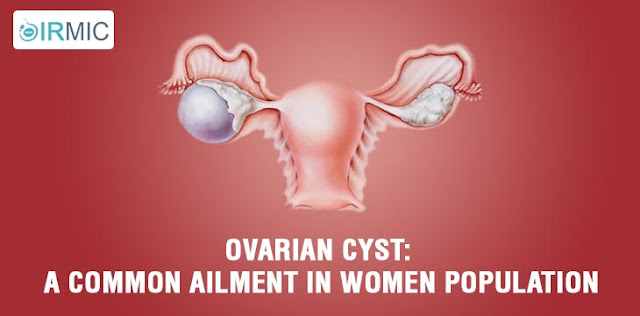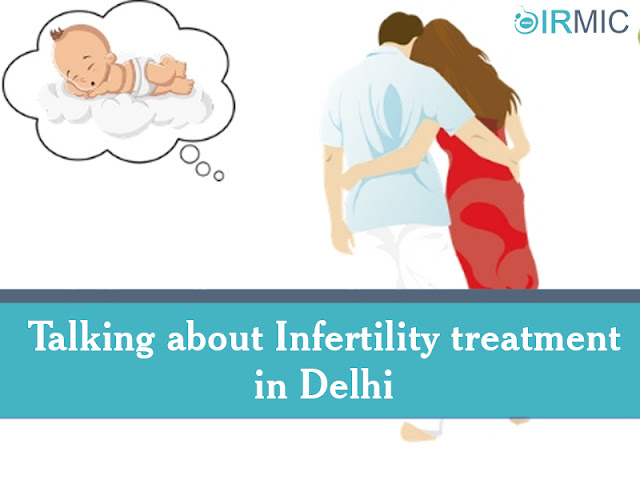Ovarian Cyst: A Common Ailment In Women Population
Ovarian cysts are fluid-filled sores in or on the exterior of a
woman’s ovary. These are not unusual but are common during the
childbearing ages and are customarily developed during ovulation. In
multiple cases, the cysts disappear on their own and are naive but not
continuously! In some instances, they demand surgery. A woman in her
life can develop either one or multiple cysts in single or both ovaries.
These ovarian growths may fluctuate in shapes and sizes.
Content Source : http://drrksharmaivf.in/blog/ovarian-cyst-a-common-ailment-in-women-population/
Facts One Should Know About Ovarian Cysts
Ovarian Cyst is prevalent in women with normal monthly cycles. Many women form at least one follicle every month but nobody recognizes the presence of cyst unless they suffer or when multiple cysts are formed. Roughly, 8% of the women before menopause may have big cysts in their ovaries that demand treatment that demands to be cured. Specialists should be interviewed whenever you think you have a cyst growing inside you, despite of age. If you face signs like bloating, urge to urinate more often than normal, pelvic agony or pressure, abnormal vaginal bleeding, etc. then it’s time to meet your expert.Two Disorders Which End Up In Ovarian Cyst
Most ovarian cysts do not restrain the possibilities of achieving motherhood but the disease caused due to cyst can seldom make it more laborious to conceive. Two major ailments that lead to the formation of ovarian cysts and impotence are discussed further. Endometriosis is a malady that occurs when the Uterus lining waives the same whereas PCOS is one of the leading reasons for Infertility as women with PCOS often possess many small cysts in their ovaries. In many women, the ovaries make many small cysts, termed as Polycystic Ovary Syndrome (PCOS) which sways ovaries and uncertainties of being pregnant. Ovarian cysts are usually unique once a woman’s body attains menopause. Women having ovarian cysts post menopause are more unsafe and prone to ovarian cancer. Besides, cysts are common during pregnancy, but these are benign and inoffensive but those cysts which remain to grow can crack and impact childbirth.Talking About Different Ovarian Cyst
Follicular Cysts
Most prominent follicular cysts will go incessantly on their own for three months. During ovulation, one of the ovaries will deliver an egg from a tiny sac called a follicle. A cyst can happen if the follicle creates an egg, but doesn’t deliver it for ovulation. This type of cyst can also arise if a mature follicle collapse on itself. These kinds of cysts grow up to 2-3 inches in diameter.Corpus Luteum Cysts
After your ovary discharges an egg during ovulation, the empty follicle the egg was freed from typically shrivels back down. Nevertheless, sometimes a follicle will terminate and start to collect liquid inside. This fluid-filled follicle is termed a corpus luteum cyst. In most instances, these sorts of cysts are only seen on one ovary at a time and produce few to no indications. In some instances, a corpus luteum cyst will bleed or induce pain.The Non-Functional Cyst
There are even instances of the non-functional cyst as it can grow on your ovaries whether or not you’re ovulating. These varieties of cysts might be one of the resulting types. Endometriomas are cysts that arise due to a malady called endometriosis, in which uterine endometrial cells develop outside of your endometrium and can perform as endometriomas.Reference
If you or anyone is suffering from an ovarian cyst or such a problem try meeting Dr. RK Sharma, the best Infertility doctor in Delhi.Content Source : http://drrksharmaivf.in/blog/ovarian-cyst-a-common-ailment-in-women-population/




Gynecologist in Indore near Vijay Nagar
ReplyDeleteList of gynecologist in Indore
Best Gynecologist in Indore